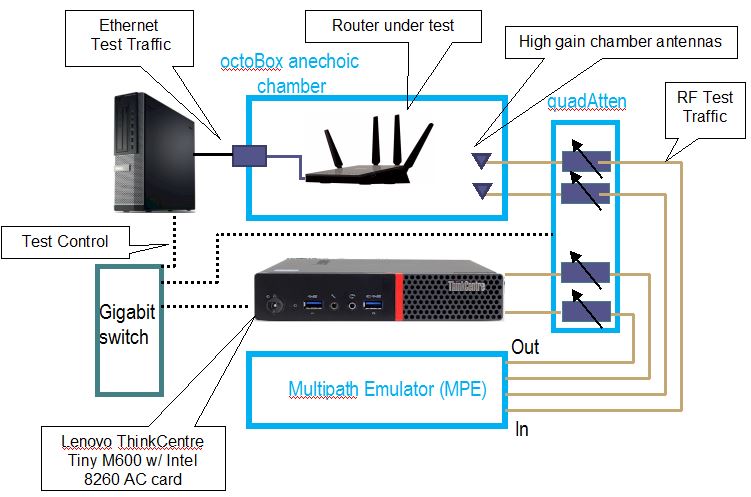
Read on SmallNetBuilder
Last edited:

now that the FCC does allow the same power in the lower segment of 5GHz. channels as the upper segment of 5GHz. channels, do newer routers like the Netgear R7800 take advantage of that? Can older routers take advantage of this via new firmware, or only newer routers? Not sure if the firmware that you can flash has control over radio power or not?
Tbe Veriwave is a very powerful system, but has three limitations when it comes to the type of testing we do. Its input range is limited to a 10dB range from around -25 to -35dBm. So it can't be used with external programmable attenuators for rate vs. range testing.I'm wondering why still use Chariot for 2x2 throughput testing since you already have IxVeriwave. Shouldn't keep the test bed as similar as possible ?
Any changes to transmit power levels require FCC recertification. I know of no older routers that have gone through the process. Please correct me if I am wrong.
New routers have been shipping with the new transmit power levels since the rules went into effect.
I'm wondering why still use Chariot for 2x2 throughput testing since you already have IxVeriwave. Shouldn't keep the test bed as similar as possible ?
Load / capacity / stress testing is in the works. But need to work through some challenges with Veriwave and decide on the approach.
Our V9 wireless test process introduces new test clients and new ways of using them.
Read on SmallNetBuilder

Welcome To SNBForums
SNBForums is a community for anyone who wants to learn about or discuss the latest in wireless routers, network storage and the ins and outs of building and maintaining a small network.
If you'd like to post a question, simply register and have at it!
While you're at it, please check out SmallNetBuilder for product reviews and our famous Router Charts, Ranker and plenty more!
